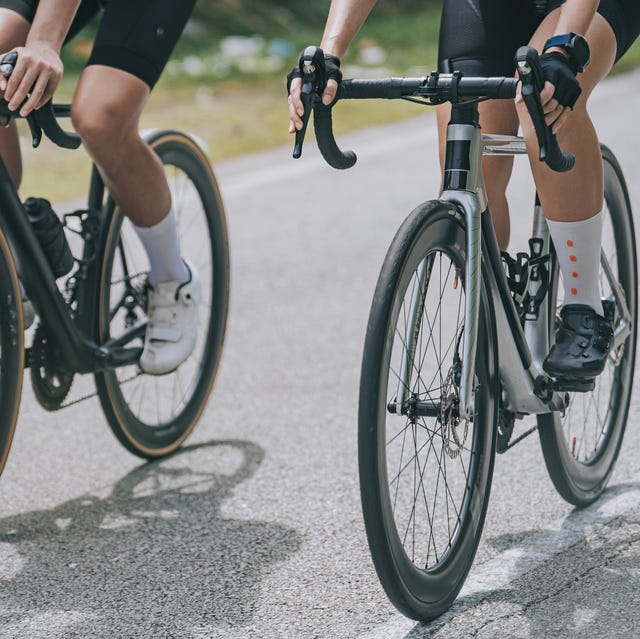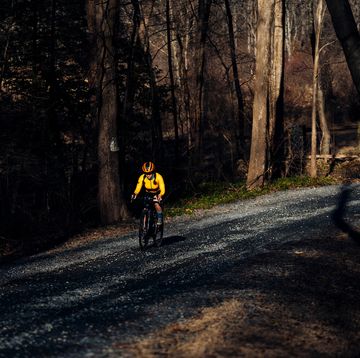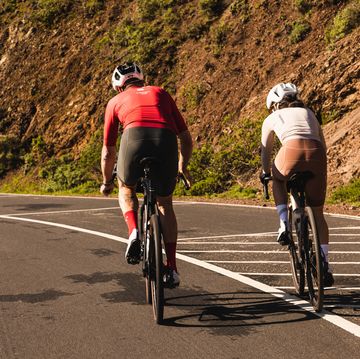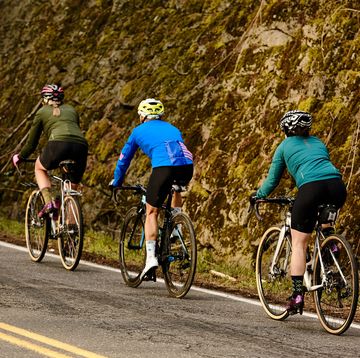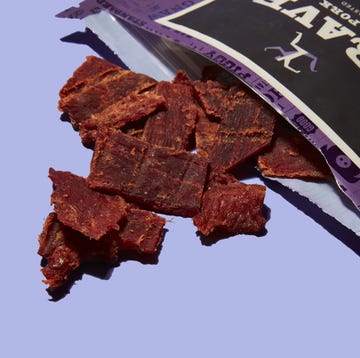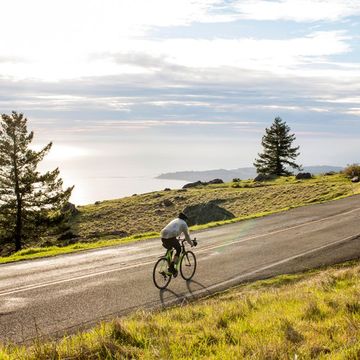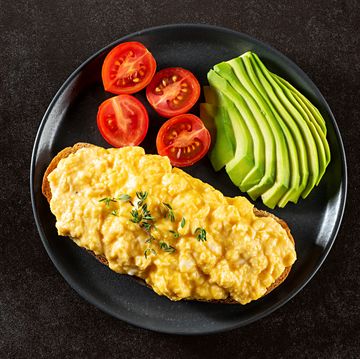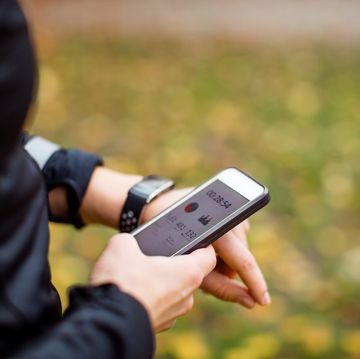One of the best benefits of cycling for weight loss: If you love the sport, you’ll do it more often. Finding a form of exercise you truly enjoy and can turn to on the regular means you won’t find it difficult to keep moving, which can support your journey to lose weight.
While there is more to weight loss than exercise—diet, sleep, and stress, for example, can also play a role in the results—cycling also provides benefits that go beyond helping you move more and burn calories. That’s why it’s so smart to make it a regular part of your life.
For a full picture on what to know about cycling for weight loss, we break down exactly why it’s such a good tool for managing body composition, plus tips for how to support your rides so you reach your weight goals.
Why Cycling for Weight Loss Is a Solid Strategy
According to a research paper published in 2018 in Medical Clinics of North America, weight loss maintenance is about making sustainable (meaning small and approachable) changes to diet quality and physical activity. In other words, no matter your genetics, if you consistently eat well and stay active, it is likely your body will find a healthy weight set point.
To help with that activity part of the equation, biking can be a boon for getting you to meet physical activity guidelines—and then some. Here, all the reasons it’s such a great sport for supporting weight-loss efforts.
1. It’s Easy on Your Joints
Because cycling is low-impact, experts often recommend it as the exercise of choice for people with arthritis and other joint ailments. To ride ache-free, though, it’s a good idea to get a bike fit, so your knees, hips, and shoulders feel good as you pedal.
The low-impact aspect of cycling is one reason Jimmy Weber of Enid, Oklahoma, got on a bike. Now 150 pounds lighter than his max weight of 410 pounds, Weber initially shed weight through bariatric surgery and a lot of walking. However, his usual seven miles a day got boring, which meant he was less inclined to go as far as he wanted to meet his exercise goals. Meanwhile, running was out of the question because of health concerns.
The bike, however, was another story entirely. He bought his first bike in 2011 and has clocked more than 20,000 miles in the years that followed, including numerous club and charity rides along the way.
2. You Can Ride Year Round
Most outdoor activities are pretty dreadful when you bring them inside (we’re looking at you, treadmill), but indoor cycling apps like Zwift, TrainingPeaks, and Wahoo Systm, as well as virtual studio cycling classes, such as Peloton, make stationary cycling fun and entertaining.
You’ll be less likely to fall out of routine when the weather turns bad when you create a stellar indoor bike setup.
3. It Fits Easily Into Your Life
No time to exercise? Then use a bike to commute or run errands. This way, you won’t have to reserve a chunk of your day to “work out.”
By riding your bike to the store, bike commuting to work, and riding instead of driving for other errands, you can slip in hours of activity every week doing the things you’d normally do anyway—and achieve a healthy weight while you’re at it.
4. It Makes Switching Up Your Workouts Easy
Whether you love long, steady-state rides or pushing through all-out intervals, you can do both easily and happily on a bike. Plus, you can switch up your intensities between different heart rate and power zones, testing your body in ways that can lead to improved body composition.
In fact, a systematic review and meta-analysis published in the journal Circulation: Cardiovascular Quality and Outcomes in 2022, found that hybrid-style training, in which you mix up endurance and interval training was the second most effective way to improve cardiometabolic factors, including body composition. Combining aerobic activity and resistance training ranked first.
5. You Can Ride All Day
Okay, so only if you build up to it first. But they don’t call zone 2 riding your “all day” pace for nothing. Because of riding’s low-impact nature and that fact that you can keep your heart rate relatively low while you ride, you can get in more time moving, without overdoing it.
Tips for Supporting Your Cycling for Weight Loss Efforts
Cycling offers everyone a creative and fun way to get some exercise, and with countless ways to mix it up, it can keep you from getting bored.
“Bike riding is diverse when it comes to weight management,” Weber explains. “You can go hard and fast and burn a lot of carbs, or slow and steady to burn a lot of fat. Plus, I would not be as happy if I had to maintain my weight with diet alone.”
As mentioned earlier, though, exercise isn’t the only factor that plays a role in weight management. To increase those advantages of cycling for weight loss, focus on these other lifestyle habits, too.
»Find Friends
Research shows that social support—especially having a workout buddy or two—dramatically increases the likelihood that you’ll stick with your routine, and consistency is key to improving your fitness and shedding unwanted weight.
Cycling is such a social sport that, like herds of buffalo and flocks of geese, there’s even a special name for a group of us: a peloton. It doesn’t take more than a quick search to find local cycling clubs where you can meet riders of the same fitness and ability levels to join on rides.
»Do HIIT Workouts
Your body burns fat through oxidation (part of breathing) and by metabolizing (or using) the triglycerides stored in fat cells. As your body metabolizes the triglycerides and burns the fat, you exhale the waste product (carbon dioxide) with every breath. Translation: When you’re breathing hard, you’re burning fat.
This is why rides that include short, intense efforts (a.k.a., high-intensity interval training or HIIT) are scientifically-proven fat burners. In a well-cited, head-to-head comparison from 2011, researchers from the University of Western Ontario found that runners performing four to six 30-second, full-throttle sprints three times a week burned more than twice as much body fat as those who ran for 30 to 60 minutes at a moderate, aerobic intensity.
To boost your fat burn, add HIIT training to your rides twice a week.
»Switch Up Your Rides
On a weight-loss plateau? Time to try a different type of ride. Your body adapts to what you ask it to do, so if you always bike the same route at the same intensity, you get used to it and stop adapting. Change it up to make progress in turning to cycling for weight loss.
Look at your weekly rides and plan for each one to be a bit different from the rest. Go long one day; hit the hills another; include steady efforts during which you’re working for 15 to 20 minutes at “race pace” (or right where you can just speak a few words at a time) in another. This strategy trains all your energy systems, so your body has to keep adapting and you avoid plateaus.
»Eat a Healthy Diet
If you want to lose weight, healthy eating does play a part in it.
Research suggests that there’s no single best strategy when it comes to diet for weight loss. Whether you’re counting macros or choosing the well-studied Mediterranean diet—or simply making healthy choices throughout the day—you have to find an eating plan that works for you.
One thing to keep in mind: According to a 2022 study published in Obesity: The Journal of The Obesity Society, those who changed their weight and stuck with it did so by changing their attitude. The number-one reason they thought they were successful? Perseverance. They just kept trying until they found what worked for them.
Focusing on diet for weight loss doesn’t mean cutting out food groups or counting calories—you need food to fuel your cycling, after all. “Riders trying to lose weight will often not eat before or after a ride because they want to burn fat and lose weight,” says Leslie Bonci, R.D., sports nutritionist at Pittsburgh-based Active Eating Advice and coauthor of Bike Your Butt Off. “Problem is, that nearly always leads to overeating at some point later in the day.”
Instead, time your normal meals to fuel your rides. For example, if you’re riding midday, try to split your lunch in half. Have half your sandwich half an hour before you go out and eat the rest when you’re done. You can do the same with breakfast.
If you’re riding longer and/or harder, take food with you, so you can eat about 200 calories an hour while you ride. Have a small recovery snack like a glass of chocolate milk and a few almonds when you’re done to refuel and replenish, then eat as usual for the rest of the day.
“Eat three meals that are satisfying enough that you can go four to five hours until you eat again,” Bonci adds. “Portion your plate so you have half your calories from vegetables and fruits, a quarter from complex carbs, and a quarter from lean protein. Top with healthy fat like nuts, avocado, or olive oil.”
»Add Strength Training
Cycling builds some muscle (see: calves and quads), but it’s not enough to offset the general muscle loss that happens over time. Losing muscle hurts your metabolism—and makes it difficult to lose or even maintain bodyweight—and also limits the amount of power you can put into your pedals (to burn even more calories and fat).
The solution is strength training. And as research in the Circulation study mentioned above says, combining resistance exercise with aerobic workouts is the best way, in terms of exercise, to improve body composition.
Lift weights two to three days a week to build lean muscle tissue, which will not only make you faster and stronger on your bike, but also more metabolically active so you will use more energy all day long.
»Focus on Sleep
If you’re not getting enough sleep, that may very well be the missing piece to your weight loss puzzle. A study published in the International Journal of Obesity in 2020 concluded that the more you get adequate amounts of sleep and stick to a sleep schedule, the more successful your weight-loss efforts will be.
According to the study, you should aim for at least seven hours of sleep. Remember, your body needs rest to recover from riding, so it can also help you perform better too.
The Bottom Line on Cycling for Weight Loss
Again, people who are most successful at long-term weight loss have the patience to figure out what works for them. Managing weight can be a lifetime journey. No quick-fix diet has been shown to successfully keep weight off for the long term, but adaptations to the Mediterranean way of eating and the DASH diet, as well as others have all been shown to support a healthy weight.
What’s most important: If you like riding, stick with it no matter what the scale says. Rather than focusing on weight loss, set a few cycling goals that don’t have to do with metrics. And enjoy cycling for all the other benefits it offers too.

Donna Raskin has had a long career as a health and fitness writer and editor of books and magazine articles. She bikes in nearby county park, lifts weights, takes Zumba, and loves to walk/run with her dog, Dolly.
